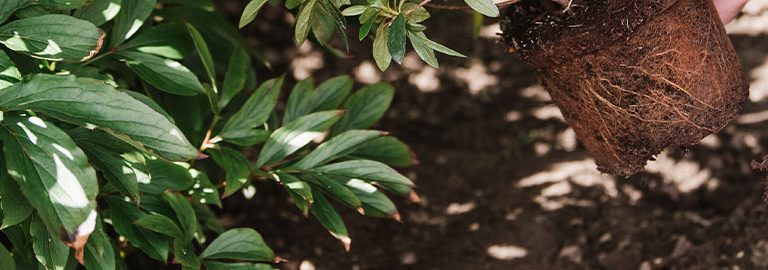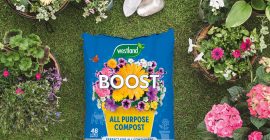Understanding ericaceous compost is vital in the role of your acid loving plants flourishing. In the realm of gardening, success often hinges on the soil. Each plant species has its own unique preferences. Therefore catering to these needs is crucial for vibrant growth and abundant yields. If you are cultivating acid-loving plants such as rhododendrons, azaleas, or camellias, then ericaceous compost is a secret weapon. But what exactly is Ericaceous Compost, and how does one use it effectively?
Ericaceous Compost, also known as acid compost, is a specially formulated soil blend. It’s tailored to suit the requirements of plants that thrive in acidic conditions. Engineered to have a low pH level, typically ranging from 4.5 to 6.0, it creates an environment conducive to the growth of acid-loving plants.
The key components of Ericaceous Compost often include:
- Peat Moss: A primary ingredient, peat moss aids in moisture retention and contributes to the acidity of the soil
- Perlite or Grit: These additives enhance drainage, preventing waterlogging which can be detrimental to sensitive roots
- Organic Matter: Composted pine bark or leaf mold adds nutrients to the soil, fostering healthy plant growth
- Acidifiers: Some Ericaceous Compost blends may contain additives like sulfur to further lower the pH level and maintain acidity
How to Use Ericaceous Compost
Using Ericaceous Compost effectively involves several steps:
- Selecting the right plants: ericaceous compost is best suited for acid-loving plants such as rhododendrons, azaleas, blueberries, cranberries, camellias, heathers, and certain varieties of hydrangeas. Ensure that the plants you intend to grow thrive in acidic soil conditions
- Preparing the soil: Before planting, prepare the soil by mixing ericaceous compost with existing soil. Or you can use it as a top dressing. Aim for a ratio of 1 part ericaceous compost to 2 parts soil for planting beds. For potted plants, fill containers with ericaceous compost entirely
- Planting: Ensure that the root ball of the plant is surrounded by ericaceous compost. Backfill with the compost mixture and gently firm the soil around the roots
- Mulching: Apply a layer of ericaceous compost as mulch around the base of plants. This helps to conserve moisture, suppress weeds, and gradually release nutrients into the soil
- Regular feeding: While ericaceous compost is rich in organic matter. Periodic feeding with a balanced fertiliser formulated for acid-loving plants can further support growth and blooming
- Monitoring pH levels: Periodically test the pH level of the soil to ensure it remains within the ideal range for your plants. Add more ericaceous compost or using specific soil amendments as needed
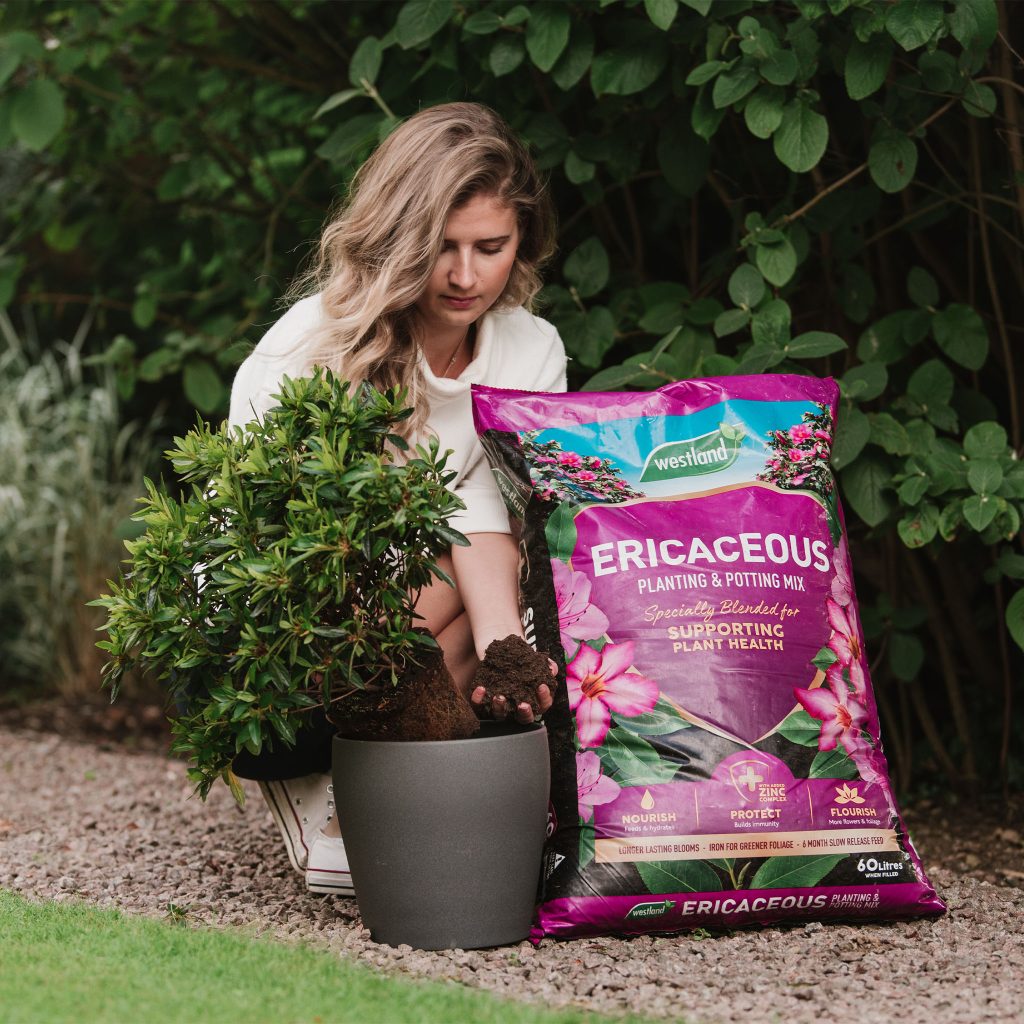
Benefits of Ericaceous Compost
- Optimal Growth: Provides the ideal soil conditions for acid-loving plants, promoting healthy root development and lush foliage
- Enhanced Nutrient Uptake: Maintains nutrient availability in the soil, ensuring plants have access to essential minerals for growth and flowering
- Prevention of Nutrient Deficiencies: Helps prevent nutrient deficiencies commonly associated with alkaline soils, such as iron chlorosis
- Long-Term Soil Health: Improves soil structure and fertility over time, fostering a thriving ecosystem beneficial for plants and beneficial soil organisms
Ericaceous Compost is a valuable resource for gardeners seeking to cultivate acid-loving plants. By understanding its composition and proper usage, you can create an optimal environment for these plants to flourish, resulting in vibrant blooms and bountiful harvests. So, whether you’re nurturing rhododendrons or indulging in homegrown blueberries, ericaceous compost may just be the secret ingredient your garden needs.
Products we Recommend
Westland Ericaceous Planting & Potting Mix
Westland Ericaceous High Performance Liquid Plant Food
Westland Ericaceous Plant Food Granules
How to Feed Ericaceous Plants
- Ericaceous plant fertiliser: Opt for a specialised ericaceous plant fertiliser that is specifically formulated to meet the nutritional needs of acid-loving plants. These fertilisers are designed to provide the essential nutrients such as nitrogen, phosphorus, and potassium, along with micronutrients like iron, manganese, and magnesium, all of which are crucial for healthy growth and flowering
- Slow-release fertiliser: Consider using slow-release fertilisers designed for acid-loving plants. These fertilisers release nutrients gradually over time, providing a steady supply of essential elements to the plants without the risk of over-fertilization or nutrient leaching
- Liquid fertiliser: Apply liquid fertilisers as a foliar spray or drench to provide a quick boost of nutrients to ericaceous plants. Look for liquid fertilisers formulated specifically for acid-loving plants and follow the manufacturer’s instructions for application rates and frequency. We recommend using our Westland Ericaceous High Performance Liquid Plant Food
- Organic fertilisers: Organic fertilisers, such as compost tea, fish emulsion, or seaweed extract, can also be beneficial for ericaceous plants. These natural fertilizers not only provide essential nutrients but also improve soil health and promote beneficial microbial activity in the soil.
- pH-adjusting fertilisers: Some fertilisers for ericaceous plants may also contain pH-adjusting agents, such as sulphur or aluminium sulphate, to help maintain the acidic soil conditions preferred by these plants. However, it’s essential to use these products sparingly and monitor soil pH regularly to prevent over-acidification
Other feeding
- Seasonal feeding: Adjust your feeding schedule based on the specific needs of your ericaceous plants. Generally, fertilise them in spring before the start of the growing season to support new growth and flowering. Avoid fertilising during late summer and fall to prevent stimulating new growth that may be susceptible to winter damage
- Mulching with organic matter: Applying a layer of organic mulch, such as compost, pine bark, or leaf mould, around the base of ericaceous plants can provide a slow-release source of nutrients as the mulch decomposes. Additionally, mulching helps retain moisture, suppress weeds, and regulate soil temperature, creating a more favourable growing environment for the plants
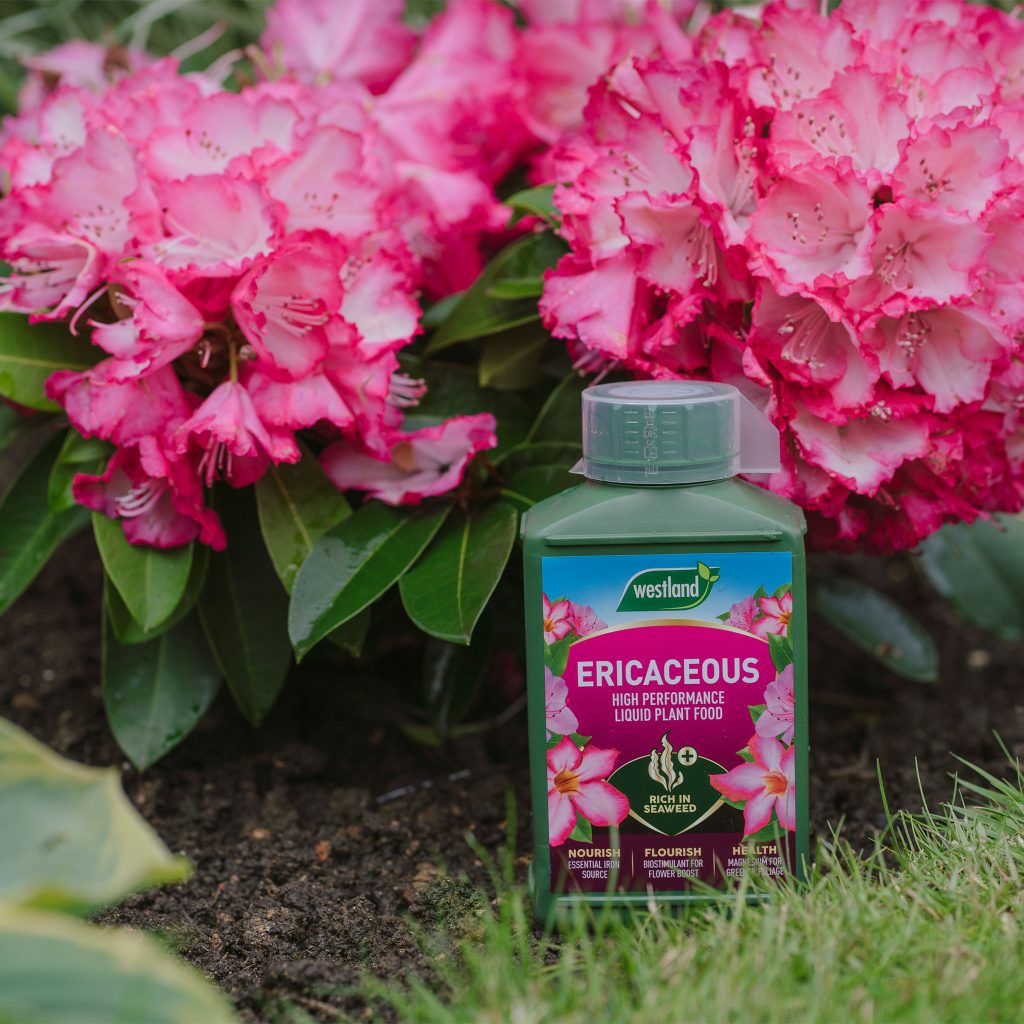
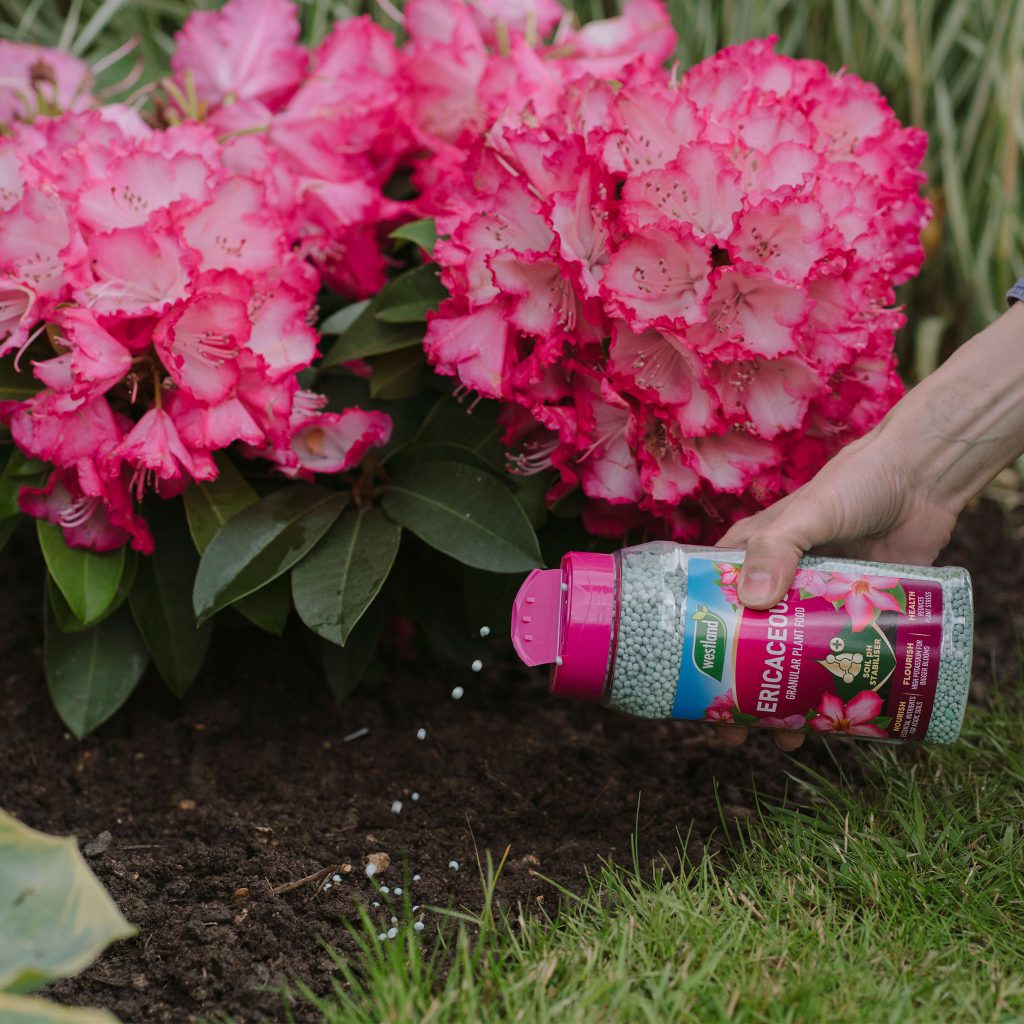
When feeding ericaceous plants, always follow the manufacturer’s instructions for application rates and timing, and avoid over-fertilisation, which can lead to nutrient imbalances and environmental pollution. By providing the right nutrients in the right amounts, you can ensure that your ericaceous plants remain healthy, vibrant, and flourishing throughout the growing season

